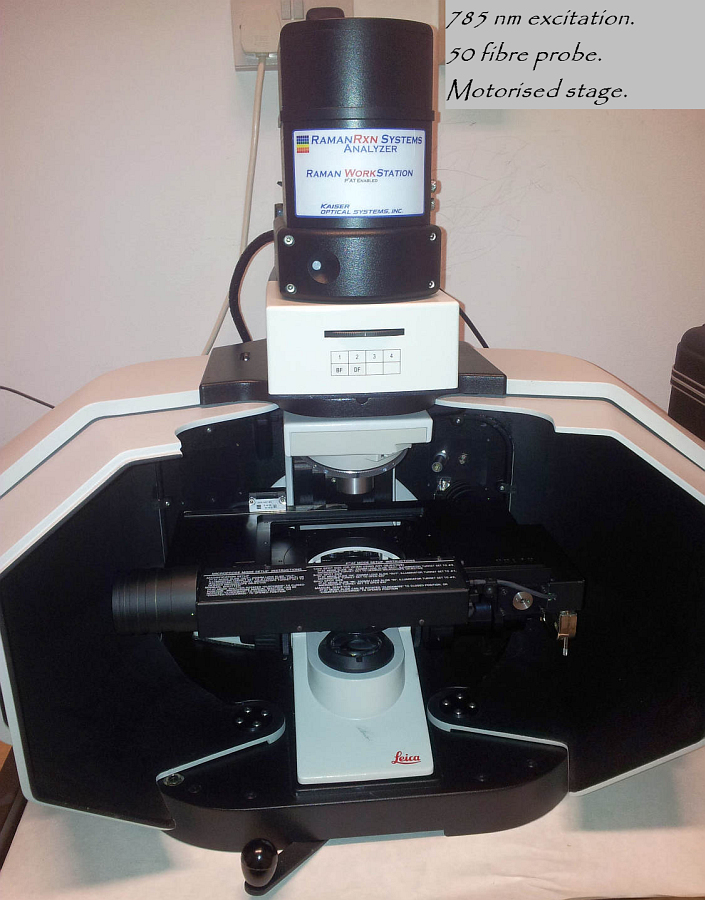
Raman spectroscopy, a vibrational spectroscopy with many useful properties has significant potential advantages in for nano-particle analysis. Key amongst them are intrinsically high molecular specificity, the ability to measure in water, minimal (or no) sample pre-treatment, flexible fibre-based sampling, and suitability for automation. Raman spectra contain not only the Raman signal but also multiple other signals which are directly related to particle size. In Galway we are using multi-variate analysis to extract this size related information.
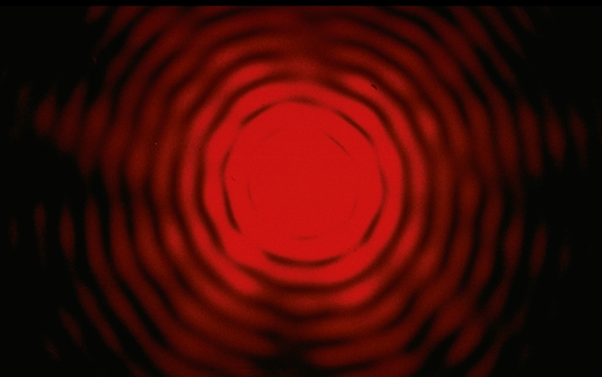
Laser Diffraction (Malvern Panalytical).
Laser diffraction is one of the worlds most widely used particle size techniques. It can measure wet suspensions, dry powders and sprays from the order of 10’s of nm to the mm scale. The principle of laser diffraction for the measurement of particle size distributions is based on the fact that the angular distribution of the intensity of scattered light by a particle produces a scattering pattern which is dependent on the particle size. For a group of particles this is additive. Large particle scatter light at small angles and small particles scatter light at large angles.
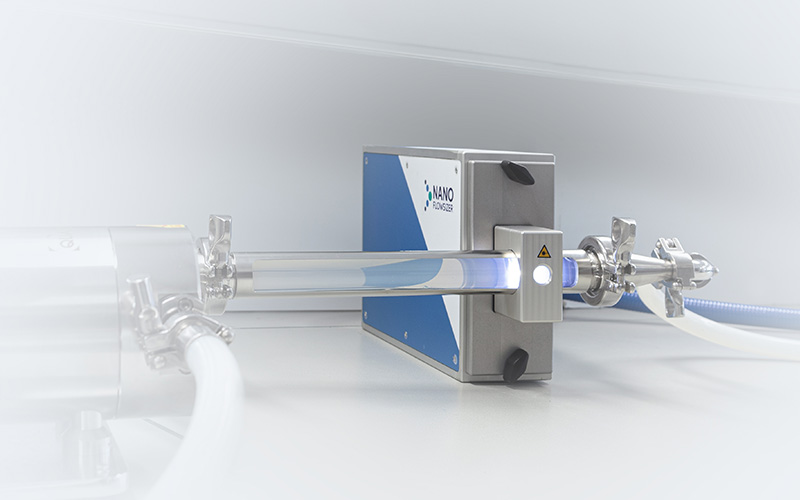
Spatially Resolved- Dynamic Light Scattering (In Process-LSP).
The NanoFlowSizer is a unique innovative system for continuous real-time nanoparticle size characterization of colloidal systems, nano-suspensions, nano-emulsions and other dispersed nano-products directly in manufacturing processes (inline) or in a laboratory setting (offline).
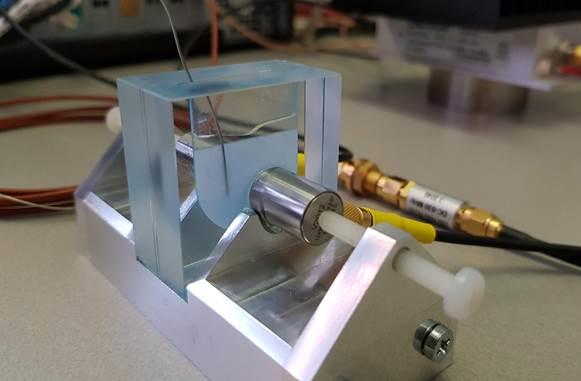
Ultrasound Nanoparticle Sizer (TNO).
UNPS relies on high precision measurement of the speed of sound and attenuation of the ultrasonic intensity. It does not require direct contact with the suspension, enabling its use in both laboratory and in-line production settings. The measurement is fast, does not require any sample dilution, and delivers results in seconds. This makes it applicable to monitor a wide range of processes such as those which involve grinding, particle growth, or settling.
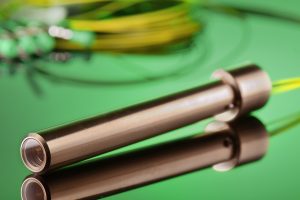
Cross Correlation-Dynamic Light Scattering (Fraunhofer)
DLS (Dynamic Light Scattering) is a standard technique for small particle analysis (1 nm-few μm) and is based on optical measurement of particle diffusion: small particles move faster; large particles move slower. From temporal fluctuations of scattering intensities, particle diffusion coefficients can be calculated which are directly related to the hydrodynamic radius. In order to make the technique inline-capable, we developed a novel probe-head that can be attached to a fiber optical DLS-probe and that enables measurements even in stirred or otherwise agitated samples. The possible range of particle concentrations will be enhanced with the help of a cross-correlation approach to reject multiple scattered photons that might disturb the signal.
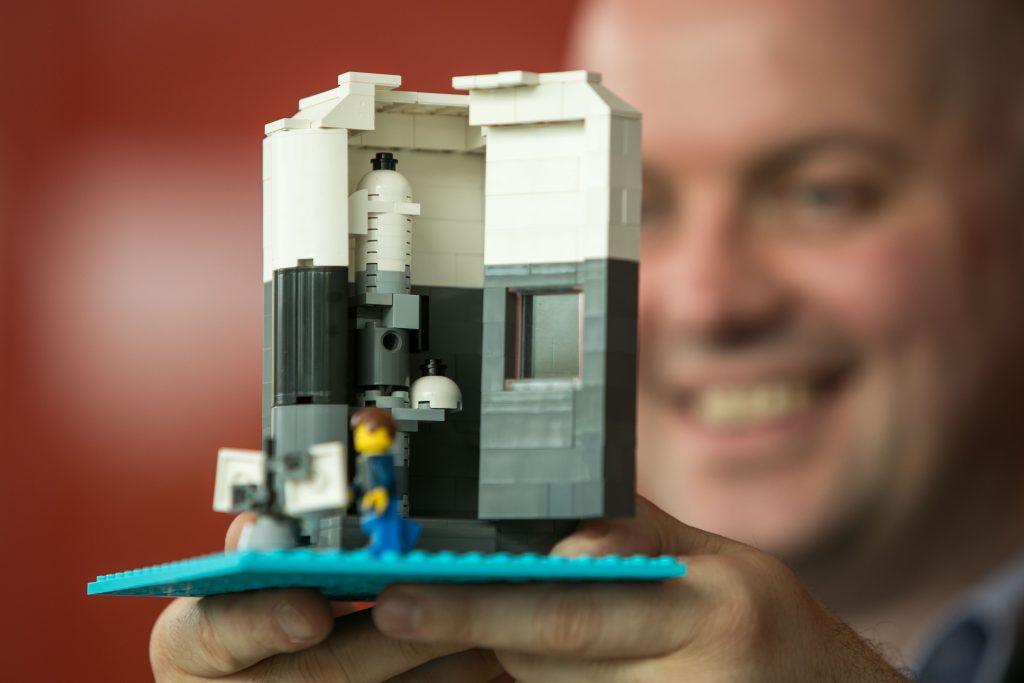
Transmission Electron Microscope (UL)
Transmission Electron Microscopy (TEM) is a method with excellent special resolution and Energy Dispersive X-ray Spectroscopy (EDS) to identify the composition of materials. Within the Context of PAT4Nano, TEM is applied as a method to cross correlate and verify the results produced by the spectroscopic and scattering techniques. We will also be utilising the latest in TEM liquid cell innovations to enable like for like comparisons with the measurements in solution as well as from dried specimens in a more traditional TEM imaging approach.

